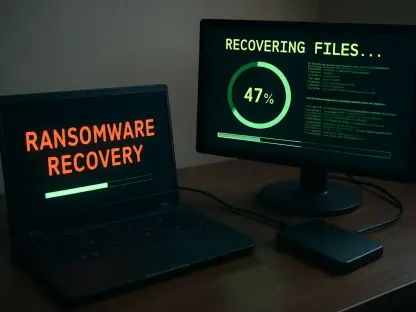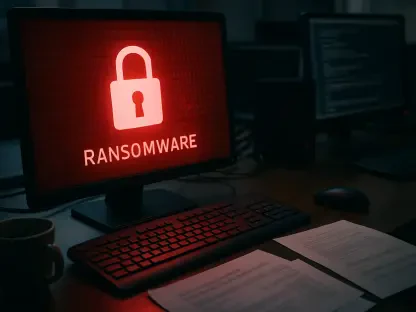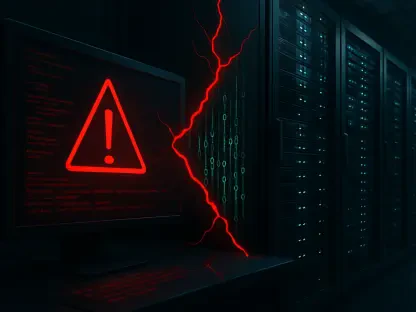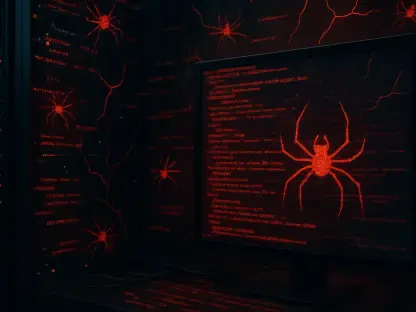In the complex and often perilous world of correctional facility management, maintaining security against the influx of contraband remains a persistent challenge for administrators across the nation, and the Texas Department of Criminal Justice (TDCJ), overseeing 87 facilities, has taken a groundbreaking step to address this issue by implementing terahertz (T-ray) imaging technology for mail screening. This innovative approach tackles a particularly vulnerable aspect of prison security—mail, which serves as both a vital connection for inmates and a potential conduit for illicit items like drugs and electronics. With smuggling tactics growing increasingly sophisticated, traditional methods have proven inadequate, prompting TDCJ to adopt a solution that promises not only to enhance safety but also to set a precedent for correctional systems everywhere. This advancement highlights a shift toward technology-driven strategies, balancing the need for stringent security with the legal protections surrounding privileged correspondence. The following discussion delves into the nature of the contraband threat, the shortcomings of outdated screening practices, the mechanics and benefits of T-ray technology, and the broader implications of TDCJ’s pioneering efforts.
Unmasking the Contraband Threat in Correctional Mail
The role of mail in correctional facilities extends beyond mere communication; it has unfortunately become a significant gateway for contraband, posing a severe threat to institutional safety. Smugglers have refined their methods over time, employing tactics such as embedding narcotics within the seams of envelopes or impregnating paper with synthetic substances like K2. These covert strategies often bypass basic detection tools, allowing dangerous items to infiltrate facilities and fuel issues like drug trafficking and violence. The audacity of these efforts underscores a critical vulnerability that correctional systems must address to protect both staff and inmates from the cascading effects of contraband-related incidents.
A particularly troubling aspect of this challenge lies in the exploitation of privileged mail, such as legal correspondence, which is safeguarded by constitutional rights. These protections limit the extent to which such mail can be inspected, making it a prime target for schemes like “mail-back” operations where illicit materials are disguised as legitimate documents. National statistics paint a stark picture, revealing that nearly half of all contraband interceptions in U.S. facilities involve these protected channels. This reality amplifies the urgency for innovative solutions that can detect hidden threats without compromising the legal rights tied to confidential communications, a balance that TDCJ has sought to achieve through advanced technology.
Shortfalls of Conventional Screening Approaches
Historically, correctional facilities have relied on rudimentary tools like manual inspections and fluorescent lighting to screen incoming mail for contraband. While these methods may have sufficed against less sophisticated smuggling attempts in the past, they are woefully inadequate against today’s intricate concealment techniques. The scale of this inadequacy was laid bare during a 2023 lockdown by TDCJ, which uncovered thousands of illicit items—including drug-laced papers, cell phones, and weapons—slipping through the cracks of traditional screenings. Such findings expose a systemic gap in security protocols that can no longer be ignored if facilities aim to maintain order and safety within their walls.
Beyond their ineffectiveness, conventional screening practices also pose significant risks to the staff tasked with conducting these inspections. Manual handling of mail increases the likelihood of exposure to hazardous substances like fentanyl, a potent opioid that can be deadly even in minute quantities. This danger, coupled with the sheer volume of mail processed daily, places an immense burden on personnel who are already stretched thin by other critical responsibilities. The limitations of these outdated approaches have thus created a pressing demand for a technological overhaul, one that TDCJ has answered with a forward-thinking solution designed to mitigate both security lapses and occupational hazards.
Revolutionizing Detection with T-Ray Imaging
At the heart of TDCJ’s transformative approach to mail security is the adoption of terahertz (T-ray) imaging technology, a cutting-edge tool that operates within the electromagnetic spectrum between microwaves and infrared light. Unlike traditional X-ray systems, T-rays excel at penetrating non-metallic materials, enabling the detection of a diverse array of substances such as powders, liquids, gels, and electronic components. This capability is paired with real-time 3D imaging, which provides detailed visuals of mail contents without the need to physically open or damage them. Such precision allows for the identification of even minute threats, down to 0.1 mg of synthetic drugs, marking a significant leap forward in screening accuracy.
The non-invasive nature of T-ray technology is particularly advantageous when handling privileged mail, where legal constraints prohibit invasive inspections. By offering a means to thoroughly scan correspondence without breaching confidentiality, this technology addresses a long-standing paradox in correctional security—how to ensure safety while upholding constitutional protections. TDCJ’s deployment of T-ray systems across its facilities demonstrates a commitment to modernizing security protocols, providing a robust defense against the increasingly cunning methods employed by smugglers. This innovation not only closes critical gaps left by older systems but also sets a new benchmark for what effective mail screening can achieve.
Measurable Gains in Security and Efficiency
The implementation of T-ray technology within TDCJ facilities has yielded tangible improvements in both security outcomes and operational workflows, underscoring its value as a game-changing tool. On the security front, the technology has driven a remarkable 78% reduction in drug-related disciplinary incidents, alongside a 64% drop in the confiscation of chemically treated mail. Additionally, violent incidents linked to drug trafficking and suspected overdoses have decreased significantly, fostering a safer environment for everyone within the facilities. These statistics reflect the technology’s ability to intercept contraband before it can wreak havoc, directly addressing one of the most pressing issues in correctional management.
Operationally, T-ray imaging has proven to be a catalyst for efficiency, more than doubling mail processing rates from an average of 150 to over 300 pieces per hour. This acceleration alleviates longstanding backlogs, allowing staff to redirect their focus to other essential duties. Furthermore, the non-contact nature of the scanning process minimizes the risk of exposure to dangerous substances like fentanyl, enhancing workplace safety for personnel. By streamlining operations and reducing health hazards, TDCJ’s integration of this technology not only bolsters security but also improves the day-to-day functioning of its facilities, demonstrating a holistic impact on correctional administration.
Setting a Precedent for Nationwide Adoption
TDCJ’s pioneering use of T-ray technology extends beyond its own facilities, positioning it as a potential model for correctional systems across the United States grappling with similar contraband challenges. The measurable success of this initiative has already sparked interest among other state departments of corrections, with several exploring the adoption of comparable tools to fortify their mail screening processes. This ripple effect highlights the scalability of T-ray technology, offering a viable solution that can be tailored to diverse institutional needs while maintaining the delicate balance between security imperatives and legal safeguards.
Looking to the future, the potential integration of T-ray systems with emerging technologies like artificial intelligence and advanced pattern-tracking databases could further elevate contraband detection capabilities. Such advancements would enable predictive analytics to identify smuggling trends, staying one step ahead of evolving tactics. TDCJ’s trailblazing efforts signal a broader transition within the correctional sector toward embracing tech-driven strategies, paving the way for a new standard in institutional safety. As threats continue to adapt, the lessons learned from this initiative will likely shape the next generation of security protocols, ensuring that facilities nationwide are better equipped to protect their environments.









